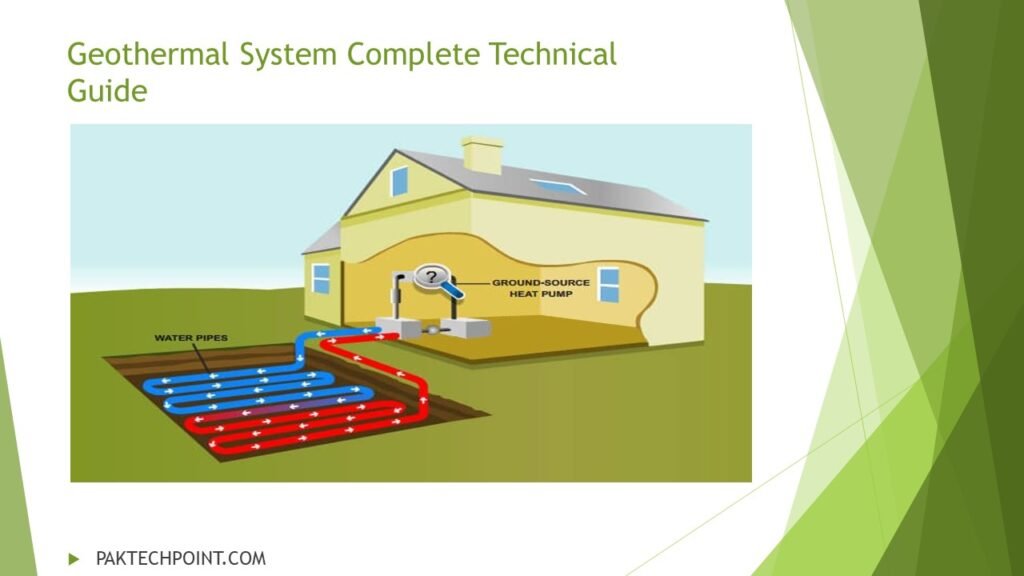This article is about Harnessing the Earth’s Heat: A Comprehensive Guide to Geothermal Systems.

Geothermal energy is a fascinating and environmentally friendly renewable energy source that taps into the Earth’s natural heat to generate electricity, heat buildings, and provide hot water. Geothermal systems have been utilized for centuries, and today they play a crucial role in the global efforts to transition towards sustainable energy solutions. In this comprehensive guide, we will delve into the world of geothermal systems, exploring their working principles, benefits, challenges, and applications.
1. What are Geothermal Systems?
Geothermal systems harness the Earth’s heat from within its crust to generate clean and sustainable energy. The Earth’s core is extremely hot, and this thermal energy gradually moves towards the surface. Geothermal power plants use various technologies to tap into this energy reservoir and convert it into electricity or heat for residential, commercial, and industrial use.
How Do Geothermal Systems Work?
Geothermal systems work on the principle of utilizing the temperature difference between the Earth’s surface and the subsurface to extract heat. There are three main types of geothermal systems:
a) Direct Use Geothermal Systems:
Direct use geothermal systems access hot groundwater from shallow wells or springs and use it directly for heating buildings, greenhouses, and recreational purposes like hot baths and pools. This method is widely used in areas with geothermal springs or natural hot water reservoirs.
b) Geothermal Heat Pumps (GHPs):
Geothermal heat pumps, also known as ground-source heat pumps, utilize the stable temperature of the Earth just a few feet below the surface. These systems transfer heat from the ground to buildings in winter for heating and vice versa in summer for cooling, providing energy-efficient climate control.
c) Geothermal Power Plants:
Geothermal power plants harness the Earth’s heat at greater depths to generate electricity. There are three main types of geothermal power plants: dry steam, flash steam, and binary cycle power plants. Each uses different technologies to convert geothermal energy into electrical power.
3. Benefits of Geothermal Systems
Geothermal systems offer numerous benefits that make them an attractive and sustainable energy option:
a) Renewable and Clean Energy:
Geothermal energy is renewable and sustainable, as it draws from the Earth’s natural heat, which is continuously replenished. It produces no greenhouse gas emissions and minimal air pollution, contributing to cleaner air and reduced carbon footprint.
b) Cost-Effective:
Geothermal systems offer long-term cost savings. Once installed, they have low operating costs as they rely on the Earth’s heat, which is essentially free. Geothermal heat pumps can significantly reduce heating and cooling costs for homes and buildings.
c) Reliable and Stable:
Geothermal systems provide a stable and constant energy supply, making them highly reliable compared to other renewable energy sources like solar and wind, which are dependent on weather conditions.
d) Versatile Applications:
Geothermal energy has diverse applications, from providing heating and cooling solutions for buildings to generating electricity. It can also be used for direct heating of water and in industrial processes.
e) Reduces Dependence on Fossil Fuels:
By utilizing geothermal energy, countries can reduce their dependence on fossil fuels, enhancing energy security and resilience.
4. Challenges and Limitations
Despite the numerous advantages, geothermal systems also face certain challenges and limitations:
a) Location-Specific:
Geothermal energy resources are location-specific, and not all regions have viable geothermal reservoirs. This restricts its widespread adoption compared to other renewable sources like solar and wind, which have a broader geographical distribution.
b) High Upfront Costs:
The initial installation costs of geothermal systems, particularly geothermal power plants, can be substantial. Exploration and drilling expenses add to the project’s upfront investment, making financing challenging.
c) Exploration Risks:
Geothermal reservoirs can be challenging to locate accurately. Drilling unsuccessful wells can result in wasted resources and costs.
d) Environmental Impact:
While geothermal energy is environmentally friendly during operation, some environmental concerns arise during the drilling process, such as potential disruptions to underground aquifers and seismic activity.
5. Applications of Geothermal Systems
Geothermal systems have diverse applications across various sectors:
a) Residential and Commercial Heating and Cooling:
Geothermal heat pumps provide energy-efficient heating and cooling solutions for homes, offices, and commercial buildings, leading to reduced energy consumption and utility bills.
b) Geothermal Power Generation:
Geothermal power plants generate electricity on a large scale, supplying clean energy to the grid and contributing to the overall energy mix.
c) Agriculture:
Geothermal systems are used in agriculture for greenhouse heating, crop drying, and providing optimal conditions for plant growth.
d) Industrial Processes:
Geothermal energy can be utilized in industrial processes, such as food processing, dairy pasteurization, and timber drying.
e) Aquaculture:
Geothermal systems support aquaculture activities by providing warm water for fish farming and enhancing fish growth rates.
6. The Future of Geothermal Systems
As countries strive to reduce greenhouse gas emissions and transition towards greener energy sources, geothermal systems are gaining momentum as a reliable and sustainable option. Advancements in drilling and exploration technologies are making geothermal energy more accessible, leading to increased adoption.